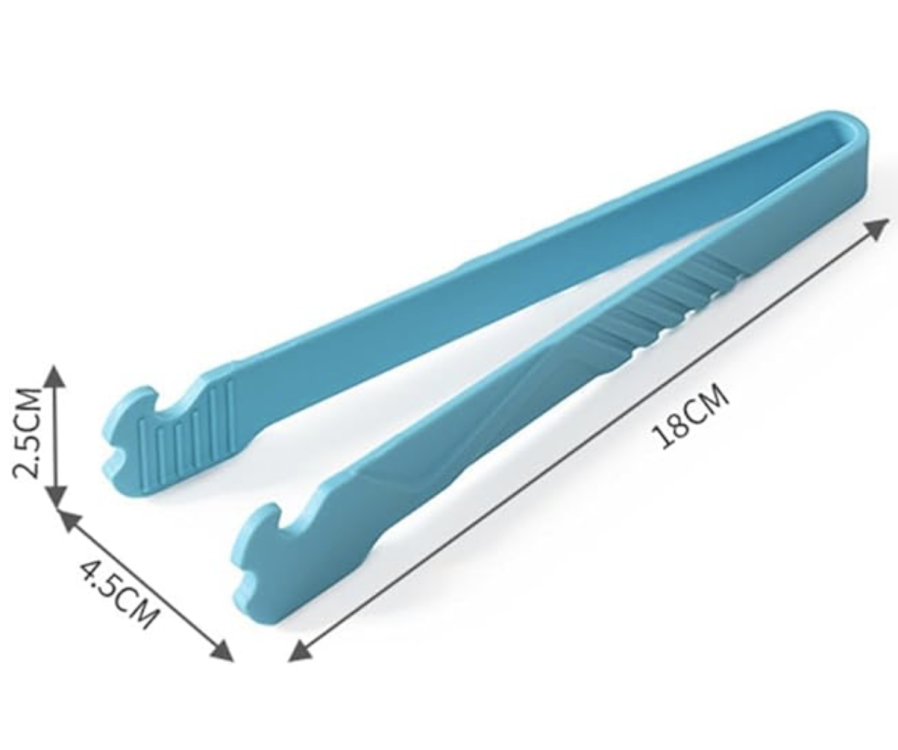-
Posts
13,718 -
Joined
-
Last visited
-
Days Won
156
Content Type
Profiles
Forums
Gallery
Events
Posts posted by IcePrick
-
-
Expensive, but find a passable compact 12v pump and carry a LiFePo battery with?
The only other feasable option I know of is a manual, and I don't know how good that option is. I carried a combo CO2/manual hand pump for tire "issues", and used it several times. After some of the rides I've had, I can't imagine going all day and then manually pumping up tires with a hand pump like that as a regular practice - we were usually pretty smoked after a day in the desert. If the foot pump is a quality one and you only need to get to 20-ish psi, it may work.
How far is it to the trailhead for you? My normal spot was about 12 miles of street, nothing over 55mph. I'd ride there aired up, air down at the trailhead, ride all day, and just ride home on the aired-down tires (we weren't usually in any shape for on-road shenanigans after a long day). I was running *around* 14 front 12 rear, dependent on brand. Yeah, the back was a little squishy and I never pushed the front around, but it didn't feel dangerous. Then again, it wasn't heavy traffic or a lot of aggressive/dangerous drivers to deal with either.
-
Hmmm. Gate gaskets for the Excursion are old, and unobtainable.
-
 1
1
-
-
3 hours ago, SwampNut said:
It is also, most likely. Unless it's good 316, it's leaching a bunch of metals into your drinks. Just watched a video cast about that and aluminum cookware.
We have polluted nearly 100% of the planet with nanoplastics, you can't avoid that either, like radiation.
"Climate and environment are fine, just ignore them!"
Was working with a friend in his new shop yesterday, we were surprised that the welding he was doing was leaving little smoke in the enclosed space. I mentioned that we were probably filtering it out through our lungs.
Those little plastic nanoparticles will be broken down in our digestive systems. It's a circle; the planet will be fine.
-
All I know is, if you're fat, I'm morbidly obese.
-
1 hour ago, JaBr said:
Yes, exactly that. I actually enjoy it so it's not an issue, my good lady though is another matter, she's not big on meat at all but will happily eat things she really shouldn't, she has fibromyalgia and personally I think she would benefit from carnivore but it's not something she would want to do.
How long have you been on this diet? What was your diet previously? Did you have baseline bloodwork before starting? Any health issues you're trying to resolve with the new diet?
I'm very curious about the effects.
-
 1
1
-
-
4 hours ago, SwampNut said:
you’d feel so famished that you’d be driven to eat 500 more calories a day
Yes and no, I think. The science and math works, but introduce human variables into the equation and it alters the outcome - not the formula. He's introduced "feel" into the equation, and upped the caloric intake - arbitrarily changing the input values. The formula still stands, as he explains in his second paragraph.
It's still calories in, calories out. Appetite shouldn't enter the scientific equation; it's basic biology. If the human psyche won't allow the subject to remain within the bounds of the equation, then they're changing the input numbers, not the science. It's a tidy explanation that lack of self-control is one reason diets fail, but it doesn't challenge the basic metabolic mathematics.
Appetite can be overcome in a number of ways. If you're inevitably "driven to eat 500 more calories a day", you're destined to fail at any dietary alteration.
-
 1
1
-
-
4 hours ago, tomek said:
Well, it is informed opinion. I saw pics of him on Only Fans. He invited me.
You don't know better than to open one of Carlos' links?
-
All this talk about carbs has me wondering about a friend of mine who doesn't eat particularly well. No fast food, but she doesn't shy away from bacon, eggs, beef, dairy, etc. - all the things that we're suspect of when critical of the standard American diet.
I've seen her weight fluctuate prior to her infatuation with breadmaking - specifically, sourdough... which she has in the period of a couple years become a master of. She is now at a good weight (not slim, but at 63 and with a sedentary job) and has been stable there since about the time she started her bread obsession. She swears that she lost weight (27 pounds) in mere months by ADDING sourdough bread to her diet (not replacing anything other than the breads she used to eat.
Maybe she reaches satiation with lower caloric intake due to the bread? It's not something I'm likely to try, but I love bread and there's no arguing with her weight loss.
-
At the recommendation of an acquaintance, I re-watched "The Magic Pill" (once it started, I recognized that I had seen it before) on Amazon. It recommends a high-fat, low-carb diet and shows examples of dramatic results in case studies using volunteers.
I'm still unsold on the theory that one can eat "whatever I want" as long as it isn't carbs and sugars. One of the filmmaker's theories is that other carnivores in nature are able to self-regulate body weight while still feasting until satiation, yet he fails to consider that they also necessarily fast for extended periods and have irregular eating patterns due to the variable availability of prey and their physical ability to continue hunting beyond the point of satiation. And I imagine an obese predator in the wild either "self regulates" back to normal weight by being unable to successfully hunt, or becomes a feast itself for something else in the food chain. And those that can't maintain a healthy body weight on the other end of the spectrum are also cruelly absent from the sample pool. When allowed to work, natural selection is a motherfucker.
Turns out that a critical review of the subjects in the video who experienced the diet had been on high-sugar, high-carb and low fat diets to begin with. And the research did not encompass longer term health effects of eating a high-fat diet involving things like lard-smeared broccoli, pancakes made with squash and ghee, or daily helpings of bacon and eggs.
My takeaway, seemingly elusive to the filmmaker's eyes, is the elimination of added sugars, processed foods, and complex carbs is what resulted in weight loss, perceived health, and improved cognitive function - not the substitution of high-fat elements. Fat and protein are both critical to our bodies, but they don't need to come in daily overdose portions nor be the overwhelming basis of our diet.
-
 2
2
-
-
12 minutes ago, XXBirdSlapper said:
pressed for time and working outside in the dark
Is there any other way to do a brake job?
😆
-
 1
1
-
 1
1
-
-
Oh, interesting. I used to have a split oven, but it had separate doors. I think I used the lower oven once, it was really only good for pizza or something fairly thin - maybe a cake or baking tray, cookie sheet. Big family gatherings, parties... I guess I never needed to bake that much, especially at different temps.
I once had an electric warming drawer built into an island, I used the shit out of that. It would get to 245º F, I actually did brisket and pulled pork in it a couple times. Way more useful than I ever would have guessed.
-
1 hour ago, SwampNut said:
We'll have to see if me hinting at the rider's gender could be helpful, or actually could make it much much harder.
Hints aren't necessarily helpful, LOL.
So it's a tranny problem?
-
 2
2
-
 1
1
-
-
I've used silicone mats for grilling - specifically, camping, where there's a grill but the remnants on it are of dubious health risk. I've seen them advertised "for baking", but I didn't envision the purpose it would serve until now.
I've used aluminum foil for that purpose, but it disturbs the natural convection in the oven and would probably wreak havoc on the forced convection when I use that. I'm guessing the silicone would do the same, but it appears that you are using it for broiling - where heat doesn't have to circulate and getting the thermostat to read and control temps accurately isn't a concern.
Be careful pulling the rack out without protection - I've landed my fingers along the split in the tubing enough times to change my ways.
This guy is useful, and it's in your favorite measurement standard.
-
-
Just now, SwampNut said:
Might as well proceed on into the "hint" phase of this game. "He" doesn't do that.
Oh, give some others a chance.
-
He keeps *just* enough pressure on the brake pedal all the time to actuate the piston and run the pad onto the rotor, but not enough to cause the caliper to center.
-
Any unusual wear on the drive belt?
-
I'm guessing the worn pad is the piston side, but want to confirm.
-
I'd say the caliper is not centered and/or isn't floating. Incorrect caliper mount, caliper play obstruction, rotor location incorrect, rotor thickness incorrect, wheel not where it should be (spacers swapped?)... even though it was only working that pad, still seems a little premature unless it was under constant friction.
I'd want to know if it was front or rear, and if the wheel has ever been off the bike or if it's still a factory install. I'm going with the wheel not being where it's supposed to be, spacers swapped as the first thing I'd check.
-
Good answer for use in UV-exposed settings. Added to my Amazon cart, thanks.
-
12 hours ago, tomek said:
DIY is not about money, it is about convenience, and more specifically, time. Round trip to tire changing place, mandatory wait, etc. It could be easily 1.5 -2.0 hrs. Not interested, even if they did it for free.
Also, any tire changing place open and waiting for you at, let's say 10 pm? Because mine DIY is open 24/7
That too. My weekends were premium time, and the dealership was almost always closed before and after I got off work during the week. So, drop it off Saturday morning, pick it up NEXT Saturday ("You want it today? HAHAHAHAHA").
-
Last time a shop did one for me, it was $45. Then they stopped doing them unless it was their tire (@MSRP). Then they started charging for the mounting on top of premium prices for the tire. Then they stopped doing cash & carry, they wanted the labor for taking the wheel off the bike as well. That's when I started looking at machines, and my buddy found the No-Mar on a government auction site.
I used to go through tires very regularly - it was worth it (to me) pretty quickly whether in terms of money saved or to avoid wrestling on the ground with tire spoons in Knoxville humidity. Make that a $2500 brand-new machine, and I agree it would be tough for the average income/average use scenario to amortize.
-
I still use spoons on the dirt bikes most of the time, partly because that's what I'll have to do if I get a bad one when out in the weeds somewhere. A 5-gallon bucket with hose split and laid over the rim is a help at home. The No-Mar is still way better than even spooning it on a dedicated waist-high stand. I did one for a friend a few months ago, he said, "holy shit, that tire just LEAPED onto that rim!"
The higher-end models ARE big bucks, and I think the lower-end ones are at a new price point. IIRC I paid around $140 for my No-Mar a little over a decade ago, it was in an online auction from a local tech school and it went for minimum bid. The $1000 they want for the same model (updated), I think I'd still be wrestling on my knees with spoons. If the $319 model works nearly as well, I'd spend that in a minute - but I haven't used one. In principle, it works the same as the bigger units. Add a couple accessories and shipping, I bet you're at $400 or more.
-
2 hours ago, tomek said:
No Mar is waaaaaaay overpriced. Many victims of clever marketing. No idea why people buy them. In the end of the day it is muscle powered machine. You still gonna sweat like a pig on 90 degrees day. I'd never spent that kind of money on muscle powered tire machine.YMMV.
So, I'd suggest low end or high end approach.
Low end would be get Harbor Freight balancer for 50 bucks, it is good enough for motorcycle tire, and some sort of bead breaker. Can't find the link to one I have. It was, of course, cheap. Plus couple tire irons and rim protectors.
High end would be compressed air powered tire changer. More expensive vs. No Mar but not by much. And you won't sweat like a pig. And get the most overpriced wheel balancer you can find.
$320 is expensive?
And no, the No-Mar uses leverage, not much muscle involved. Compared to getting on your hands and knees and levering them off (I've done probably 100 that way), the No-Mar is like the difference between an army using horses and an army using tanks.
-
 1
1
-




Softening old hardened rubber.
in The Garage
Posted
I did that with the door seals a couple years ago, and wasn't satisfied so I just bought new seals. IIRC, they were too firm with the recommended size of hose installed.
If you had good results, yeah, I'd love to replicate them. Going down the hill to PHX is (ob)noxious, low RPM coasting downhill doesn't get the exhaust gasses propelled outside of the vacuum envelope of the gate area, and some enters the cabin. Opening a window while descending into Phoenix is generally regarded as poor form in the air conditioning conservation world.